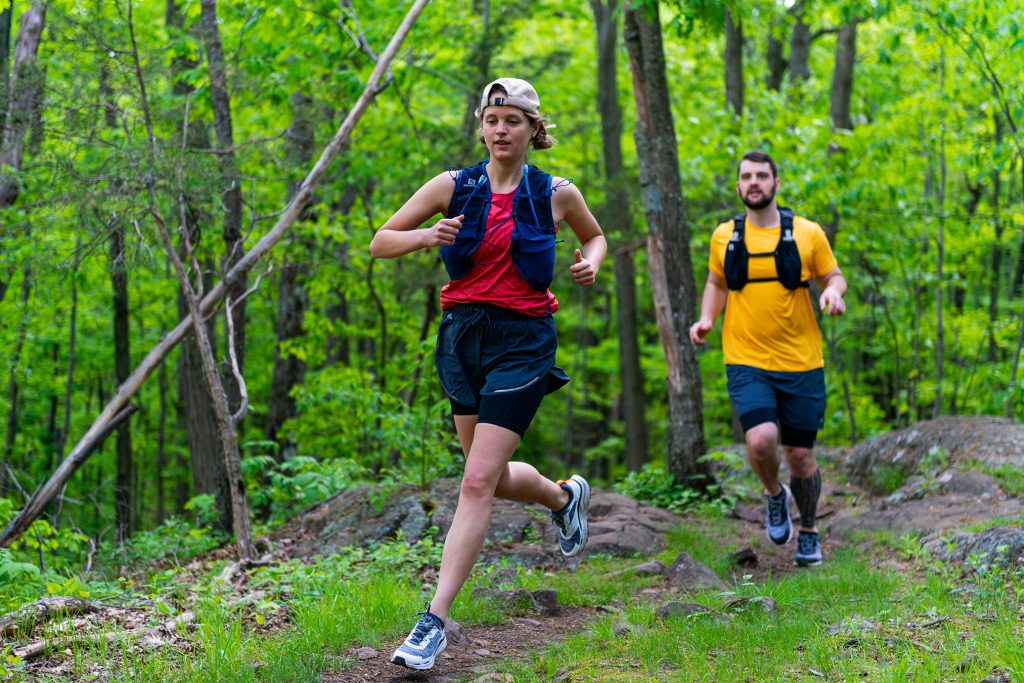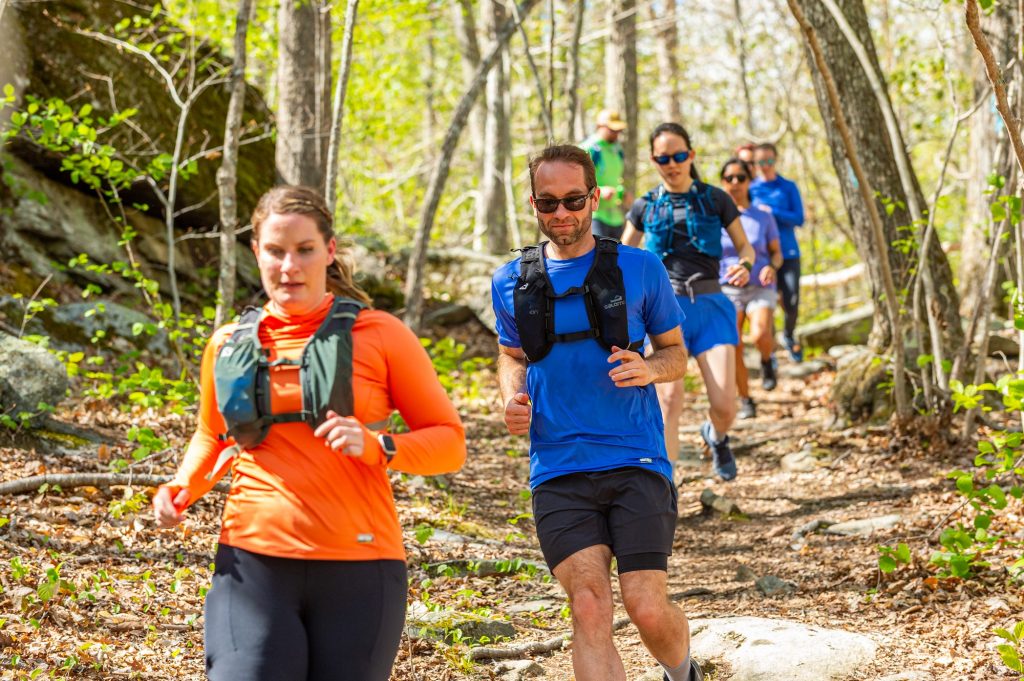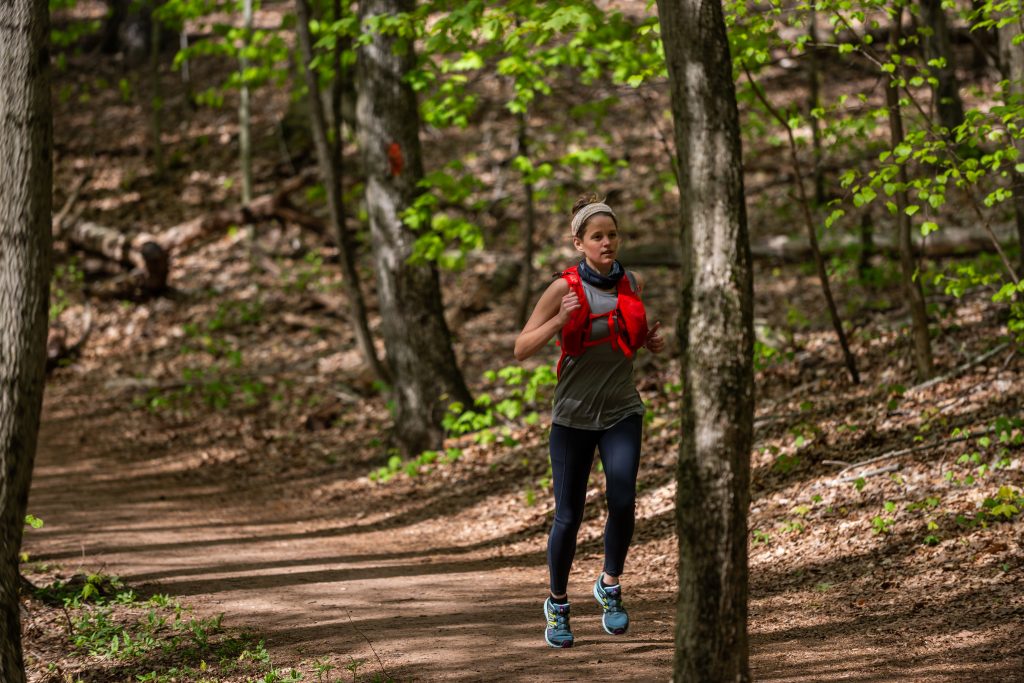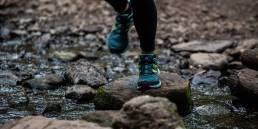With the continuing evolution of trail running and the emergence of pursuing Fastest Known Time (FKT) routes, one of the most important pieces of equipment on the trails has become the running vest. For the fleet of foot, having the right running vest can make the difference in nabbing a new FKT or falling seconds short, while for mere mortals it can determine whether they finish a big hike/trail run with daylight to spare or in the dark. Wondering how to find the right running vest for you? Factors like comfort, functionality, and applicability to your goals are all important considerations.
What is a Running Vest?
Running vests (also commonly called hydration vests) are lightweight, sleek, snugly fitting backpacks specifically designed to handle the bouncing and jostling of trail running. Running vests are available in a spectrum of sizes and can carry water, snacks, layers, your phone, and first-aid items for runs ranging from a few hours to massive ultra-endurance efforts.
Running Vest Sizing
One of the best investments for determining the correct sizing when shopping for a running vest is a measuring tape—it allows you to compare your measurements to the manufacturer’s suggested sizing measurements. This puts you a step ahead when shopping in-store and saves time when trying to find the correct sizing online when you cannot try a vest on in person.
If you plan to use your vest across multiple seasons, weather conditions, or elevations, it’s valuable to try the vest on with multiple layers to have a better idea of how it will fit in both warm and cold conditions. Some trips require more gear as well, so stuffing a jacket or a few items into a vest and adjusting the fit with different weights is also helpful in finding the best fit.
Women’s Sizing
Some manufacturers offer running vests specifically designed for women, ensuring that they account for different lengths in torso, chest size and shape, and shoulder width. These vests may have narrower shoulder straps, better ergonomics and adjustability across the chest, and other design elements specifically tailored for female anatomy.
Bottles or Bladder
The duration of your activity will help dictate which hydration system works best for your adventures: bottles or a bladder. Most vests have the option to carry bottles or soft flasks up front while also leaving space for an additional bladder in back. For example, the EMS Mad River Hydration Pack comes with a two-liter hydration bladder (with room for a three-liter bladder) and features stretch pockets on its shoulder straps.
With advances in water filtration, you might be able to skip the need for a bladder if you know you have multiple opportunities to filter water along your route. If you are training or racing in a more arid climate with little to no access to filterable water, you might want to consider having the highest capacity possible and utilizing both.
Capacity and Trail Essentials
Running vests come in varying capacities and having a baseline of the essential equipment you should be carrying on the trail will help determine the right capacity vest for you. Some essentials that will greatly increase safety on the trail include:
- A headlamp
- A signaling device (many vests now come with a whistle, so it’s worth checking if the vest you are considering does)
- Spare clothing (consider the layers needed if you were forced to stop moving for an extended period, even if that’s not the plan for your trip)
- An emergency bivy
- Spare food—extra calories on the trails can be highly beneficial if things detour from your initial plan that day
- First-aid kit with a small knife
- Small compass and map
These items help ensure that if something goes wrong while attempting an FKT, or even just on a training run, you can adapt to the situation. Many trail races also now require specific equipment—especially if you are venturing outside the U.S. to race—which often includes a rain shell, gloves, and a waterproof trail pant.
Considering these items along with the duration and the distance of your adventure will help you narrow down the best capacity vest.
Reviews and Recommendations
Read reviews from other runners, talk with friends about what vests have worked well for them, and seek recommendations from experienced athletes or retailers to get insights into the performance and durability of different running vests.
All of these factors will help you choose a running vest that meets your specific needs while enhancing your experience and increasing your safety while out on the trails.
Finding the Right Running Vest
In the end, finding the right running vest for you comes down to doing your research, trying them on, and putting in the miles. So hit the trail and start finding out what you need in a running vest.
Brendan Gilpatrick
Brendan Gilpatrick is a Maine based running coach who works with athletes online around the country. With an MS in Kinesiology and a USATF Level 2 Endurance certification his coaching focuses on communication, consistency, and specificity. Brendan has competed in races such as the Barkley Fall Classic, the HURT 100 Miler and other tough trail ultras in the US and abroad.
Related Posts
May 3, 2024
Book Review: A Light Through the Cracks by Beth Rodden
A new memoir from a pioneering woman…







